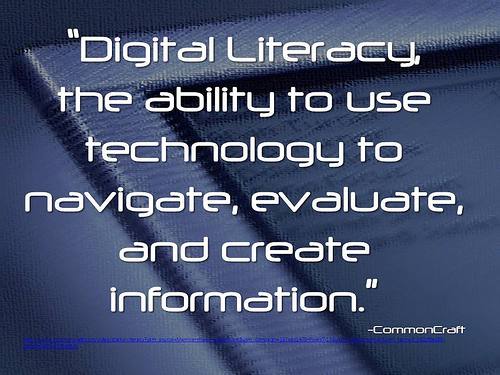This blog post is by Dr. Clifford L. Green, the Vice President of Education and Strategic Partnerships for Learning.com, a TCEA partner.
With the passage of the Every Student Succeeds Act (ESSA) and the subsequent rule-making by Congress, we can see that the new law will be used as an instrument of civil and social change. This post will focus on two closely related problems affecting communities across our country and, specifically, education that may require different solutions. The first is “digital equity” and the second is “digital literacy,” or readiness. Both exist in our schools and communities and bring to the forefront access and equity issues for disadvantaged, minority, and low socioeconomic students and families.
In an article published in The Atlantic on September 26, Kaveh Waddell cites a recent Pew Research Study Digital Readiness Gap that states that, among Americans between the ages of 18-29, 99% now have access to Internet resources. One reason for the ubiquity of access might be the federal E-rate program, which has poured billions of dollars into states to build the infrastructure necessary for schools and libraries to provide online access for their patrons.
However, what we are now learning is that simply having access to the Internet has not translated to digital readiness. The Pew study is an  important piece of the puzzle because it not only identifies that the problem is far more than just access and equity of hardware and Internet, but also brings to the forefront the issue of “digital readiness” and further provides clarity of the lack of digital literacy skills as the “main barrier to drawing people to resources for learning.” Doesn’t it make sense that the same students who do not have access to the Internet at home would also not have access to digital literacy education, those skills necessary to succeed in school, work, and college?
important piece of the puzzle because it not only identifies that the problem is far more than just access and equity of hardware and Internet, but also brings to the forefront the issue of “digital readiness” and further provides clarity of the lack of digital literacy skills as the “main barrier to drawing people to resources for learning.” Doesn’t it make sense that the same students who do not have access to the Internet at home would also not have access to digital literacy education, those skills necessary to succeed in school, work, and college?
As we make progress on access and equity issues around hardware and the Internet, the digital literacy gap seems to be widening. For example, the Pew study found that just over half of Americans who have access to the Internet don’t have the tools to use it effectively, or at all, for learning. And when demographics were examined, those that were “hesitant” were mainly minorities, women, and low-income households. Waddell also cites Betty DiSalvo’s findings in her research that “parents in lower income families were less likely to use the Internet to find learning resources for their kids and to find information to help them with school.”
So who is in the best position to solve the equity and access issues around digital literacy skills? I would submit that the solution is twofold. First, state, federal, and local policy makers need to provide resources necessary to reach out to underserved populations. Secondly, schools, community, and faith-based organizations seem to have the infrastructure in place to help effectuate a solution.
I am encouraged to see many schools taking up the challenge and embracing 1:1 initiatives, which include discussions around home access and digital literacy education as a potential solution. I recently visited Earl Boyles Elementary in David Douglas School District outside of Portland Oregon. During the visit, I met with the principal, Mrs. Guynes, who lived a “civil right” mentality with the belief that schools are not merely a place for kids to wile away their days, but when mindfully employed, can be a resource for the entire community.
At Earl Boyles Elementary, services are provided through grants, donations, and effective use of state and federal funding. During the visit, I observed community and student programs, including their 1:1 initiative, that have great potential for expansion for home access, and could be a local solution to the access and equity problem.
To that end, there is some good news in ESSA. According to Reg Leichty, Governmental Affairs advisor for the Partnership for 21st Century Learning, ESSA Title IV is the “spiritual successor to EETT last funded in 2010.” ESSA authorizes up to one billion dollars in block grants to the states, which may be spent on educational technology with the potential to be employed to help level the playing field.
What are your thoughts on new, creative, or untried ways to provide students and their families with digital literacy education at home?
